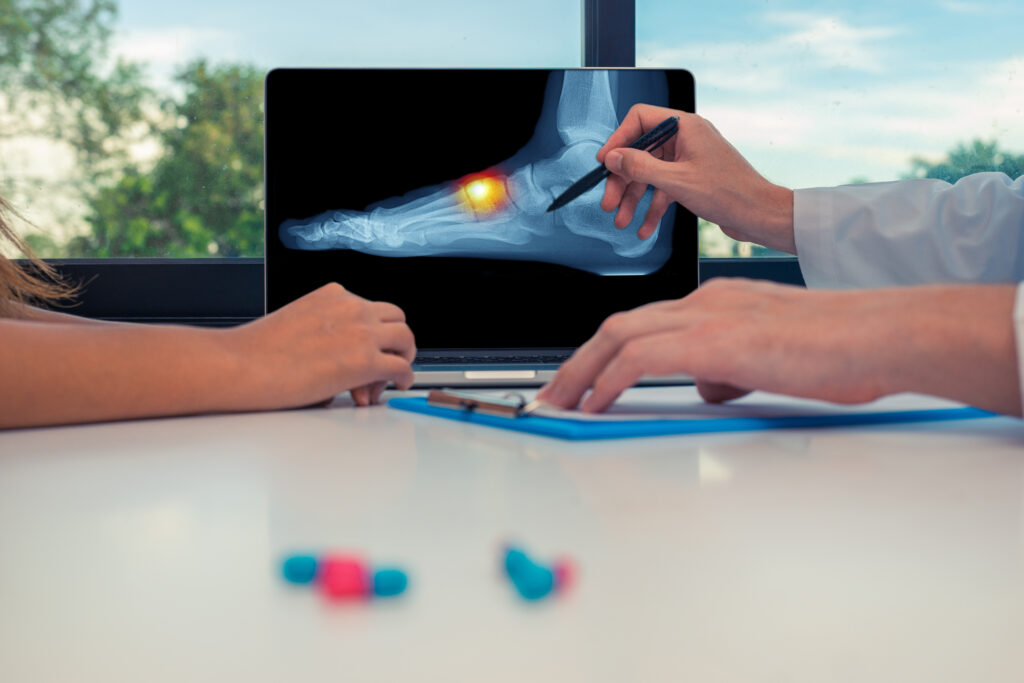By Aarti Kumar, DPM, AACFAS, DABPM
An exostosis is a medical term used to describe new bone growth on top of existing bone.

It can be used synonymously with the word “spur”. The most common locations for an exostosis to form in the foot are the heel, midfoot and big toe joint. Many times bone spurs exist and do not cause symptoms. Unfortunately, some become symptomatic or are simply “visible and palpable” and require further attention.
When the bone spur occurs in the midfoot, it can pose a special situation not only due to pain but also for cosmetic reasons and shoe irritation. Bone spurs in the midfoot can arise from trauma, arthritis or biomechanical foot types-either high or low arches. During a work up, one of our doctors will clinically evaluate the “bony bump” and then take radiographs to see the underlying joints that may be causing these specific spurs. There are various superficial tendons and nerves which pass from the leg and lie on top of the foot; having a bone spur can cause numbness, tingling or pain from the friction of these soft tissue structures rubbing up against the bone spur. Due to the friction of these tendons rubbing against the bone spur, ganglion cysts can commonly arise at the area of complaint.
Some of the treatment options for midfoot exostosis include but are not limited to: modfiying shoe gear, custom orthotics to address the underlying biomechanical problem, cortisone injection therapy, topical pain creams and physical therapy. If all these options fail, surgical treatment options of removing/shaving the exostosis or “exostectomy” is discussed with the patient.
If you have noticed a bump on the top of your foot and have been in pain, come in for an evaluation with one of our podiatrists at our various locations.





